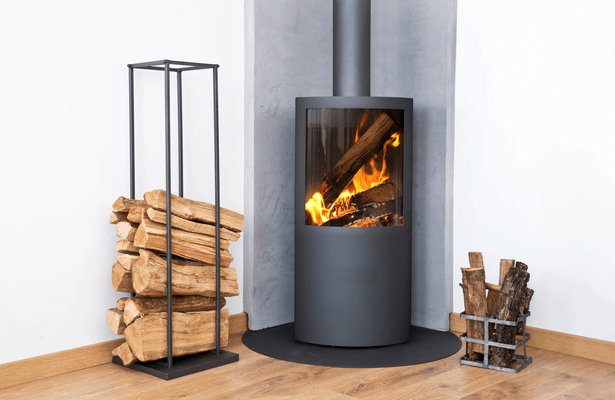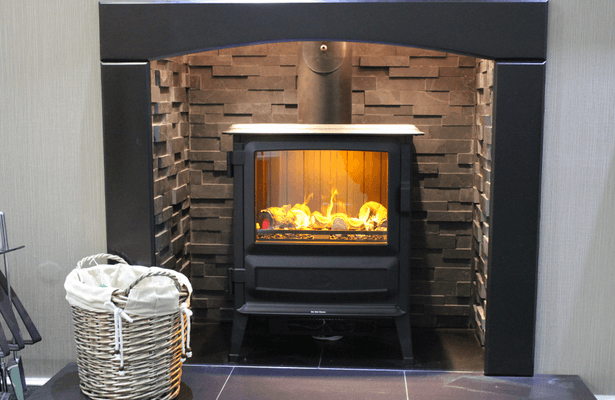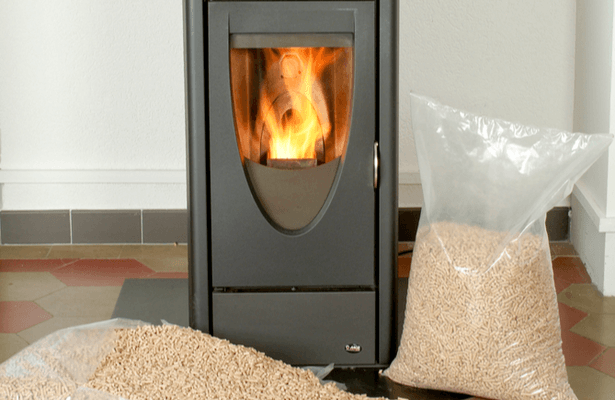Combining real heating comfort depending on the insulation of the house and heating needs, the very trendy wood stove is particularly simple to install, since it only needs to be connected to an exhaust duct. But is it free from any danger?
Offering exceptional heating performance which allows the temperature of a room to be raised in a very short time, enjoying easy and modifiable installation, the wood stove Is there still a good way to spend the winter warm?
The performance of wood stoves
The efficiency of a wood stove is 60% to 80%, on average compared to open fireplaceswhose yield does not exceed 20%. In fact, it allows a rapid burning et rapid heat diffusion.
However, for some time now, the question of particle emissions generated by stoves and their impact on the environment and health is hotly debated. Be aware that old wood stoves emit 40 to 80 g of smoke per hour while new appliances, which comply with standards EPAproduce only 2 to 5 g per hour.
So like any combustibleburning wood creates pollution : carbon monoxide, fine particles, nitrogen dioxide, volatile organic compounds… It is also up to the user to ensure that their stove is maintained and used correctly while respecting the environment and those close to them.
Wood combustion releases significant polluting emissions © novyman
But even the most planet-friendly stove is a source of pollution if it is used improperly. incorrect or if it is incorrectly installed. To avoid the particle pollution which particularly affects young children, the elderly and those with respiratory problems, and optimize the use of woodyou must for example turn on and fill the stove appropriately.
How to prevent firewood pollution?
First of all, it is important to ensure that the wood stove is installed correctly, and that the ventilation is adequate. Maintenance is also very important, do clean and inspect your wood stove every year. Choose a closed hearth wood stove and opt for certification with the label Flamme Verte 5 stars. These devices meet strict environmental requirements for carbon monoxide (CO) and fine particle emissions.

Closed hearth stoves are healthier and more efficient © Delpixe
It is very easy to check if a fireplace or wood stove is pollutant : if smells associated with wood combustion are installed in the house, there is a release of pollutants harmful to health. Furthermore, the smoke that comes out of the chimney indicates the presence of pollutants released into the environment, the darker it is, the more pollutants there are.
To use a wood stove safely, consider regularly renew the indoor air of your home to avoid the concentration of polluting substances.
The best way to reduce pollution consists of burning the wood at a temperature as high as possible: combustion is then more “ own », preventing the release of partially burned pollutants.
But the materials you burn are just as important as how you burn them. Only burn well dry wood which has been split and allowed to dry properly. Oak and softwoods are “dirtier” firewoods; use beech or hornbeam as energy wood.
Read also – Firewood: 6 solutions to buy it cheaper
Choosing the right wood stove
Avoid open fireplaces and fireplaces if you want efficient heating, because the yields are very low and the polluting emissions are significant. Also forget the good old stoves and opt for the new ones yield and to theautonomy maximized, such as pellet stoves or even the mass stoves.
We are spoiled for choice when it comes to wood stoves and boilers for reduce your heating bill.
“Turbo” and post-combustion stoves
Equipped with a secondary oxygen inlet halfway up the combustion chamber“turbo” stoves have an interesting performance.

Don’t forget to provide space to store the logs © local exhibition
THE frying pans post-combustionfor their part, have a specific post-combustion chamberat the rear of the primary combustion chamber, and are therefore more efficient than the “turbos”, but are also more dear.
Both can serve as main heating if you have a auxiliary heatinglike a solar heated floor for example.
How much does a post-combustion stove cost : between €1,200 and €5,000
Mass stoves
Thanks to the materials which compose them: refractory bricks or concrete, soapstone and others volcanic rocksthese stoves release heat gradually once they have reached the temperature.
Moreover, the heat obtained by radiation (the stove heats the murs and bodies, rather thanair), is rather pleasantand autonomy can reach 20 hours. The yield is also excellent. However, they represent a significant investment.
How much does a mass stove cost : between €5,000 and €12,000

Volatile Organic Compounds (VOCs) are rarely present in pellet stove discharge © Stefano Ember
Pellet stoves
These stoves are equipped with a pellet tank which feeds automaticallyby an endless screw, the combustion chamber. Practical since it Simply pour a bag into the tank for the heating to work, for up to five days depending on the model.
Highly automated, with adjustment by thermostat which stabilizes the device at the required temperature, most have electronic programmers allowing you to define in advance the beaches of heatingfor the day or for the week.
How much does a pellet stove cost? : between €3,000 and €6,000
The electronics are not immune to possible breakdowns, but they remain an interesting option as a main heater.
Read also – Wood pellets: reduce your pellet consumption with 4 wise tips
Article updated
consoGlobe also recommends…
Source: www.consoglobe.com


